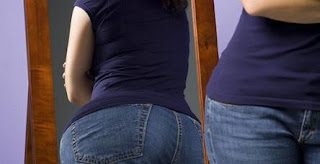
Bulimia is characterized by periodic attacks of overindulgence and expressed concern for personal appearance and weight. Bulimia predominantly affects young women. Food intake is the instinct for self-preservation. Disturbance of that drive may lead to losing it totally on one hand, and increasing it, to feel the need for large quantities of food, on the other hand. Reduced appetite for food causes starvation. Starvation can be deliberate, with the goal of weight loss.
Increase of the drive for food is seen in some diseases, such as progressive paralysis, encephalitis and some brain tumors. This disorder may occur in epileptic and, where before the attack the patient has unbearable need for food, and then can eat it in huge quantities. Increased demand for food, in terms of ill overindulgence, is called bulimia and it is often the obsessive-compulsion disorder. In that case, food reduces stress, tension or fear. Bulimia is characterized by periodic attacks of overindulgence, and expressed concern for personal appearance and weight. Bulimia predominantly affects young women. Between the two attacks, person can resist even tastiest food, if it means consuming a lot of calories. However, after that these people lose control of appetite and "throw themselves" on large quantities of "forbidden" food.
Increase of the drive for food is seen in some diseases, such as progressive paralysis, encephalitis and some brain tumors. This disorder may occur in epileptic and, where before the attack the patient has unbearable need for food, and then can eat it in huge quantities. Increased demand for food, in terms of ill overindulgence, is called bulimia and it is often the obsessive-compulsion disorder. In that case, food reduces stress, tension or fear. Bulimia is characterized by periodic attacks of overindulgence, and expressed concern for personal appearance and weight. Bulimia predominantly affects young women. Between the two attacks, person can resist even tastiest food, if it means consuming a lot of calories. However, after that these people lose control of appetite and "throw themselves" on large quantities of "forbidden" food.
For the prevention of obesity, they are using various tricks, such as deliberately vomiting and laxative intake. With time, and general health of bulimic starts to weaken, and are reported problems with teeth, dry skin and mouth, and problems with digestion and throat. Bulimia has many similarities with other diseases of addiction. In both cases, patients are occupied with substance on which they depend, they feel unbearable need for it and completely lose control when they consume that, on which they depend. Bulimia is a disease and people suffering from it are not able to control it without the help of professionals. After the doctor set the diagnosis, treatment begins as follows: psychotherapy, behavior or cognitive therapy.
No comments:
Post a Comment